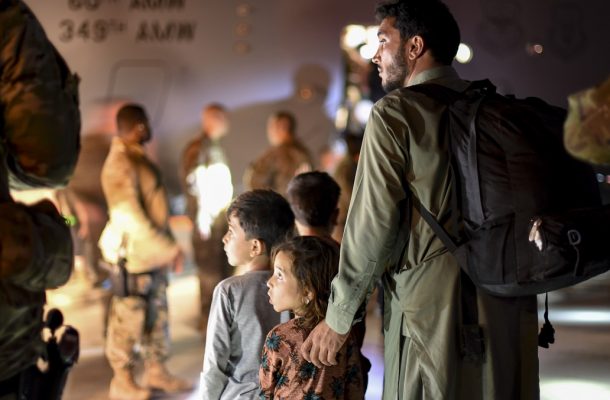Darkness falls

The Taliban, in a move that should have surprised no one, surged through Afghanistan once the United States opted to cut and run. Twenty years of a pluralistic, republican political order, which for all its defects many Afghans continued to value, have been swept away.
On the eve of the First World War in August 1914, as the lamplighters at dusk made their way through central London, the Foreign Secretary Sir Edward Grey, gazing from his window in the Foreign Office, remarked that “the lamps are going out all over Europe. We shall not see them lit again in our lifetime.”
Many Afghans must feel that the lamps have gone out for them too. They are now staring at the prospects that a brutally authoritarian force with a totalitarian mindset, fully on display when it controlled Kabul from 1996 to 2001, is back with a vengeance.
In one respect, the Taliban have changed since then, but not in a way that presages any positive benefit for Afghans. Their public relations have become far slicker, doubtless a product in part of some tutelage from their main backer, the Inter-Services Intelligence directorate (ISI) of the Pakistan Armed Forces.
Their achievements in this respect have been really quite remarkable. The zenith of their achievement was their success in convincing the Trump administration that they had moderated to the point where it would be worthwhile for the US to give them a place at the high table (in the absence of the Afghan government) and strike an exit deal with them.
Unfortunately, the defects of the 29 February 2020 agreement that provided for US troop withdrawal were multifarious, massive, and very plain at the time.
Days before the agreement was signed, the Taliban even managed to place an opinion piece in The New York Times, allegedly written by deputy leader Sirajuddin Haqqani, claiming that he was “convinced that the killing and the maiming must stop.”
That the newspaper carried such a piece was astounding, given Haqqani’s close relationship with al-Qaida. In the light of the Taliban’s subsequent savage and sustained campaign to secure power by force, the article’s status as undiluted propaganda is now quite obvious.
While plenty of Westerners swallowed this bait, and the “peace process” itself proved to be a total sham (although giving rise to what one clear-eyed analyst called “fantasy castles of research, advocacy and new institutions”), Afghans were and are far less likely to be gulled.
Thus, while some media outlets based in the US and Europe have shared the words of English-speaking Taliban spokesmen at various media conferences, Afghans are more likely to be inclined to assess the Taliban on the basis of their deeds, and the spectacle of desperate crowds seeking to escape the country points to the conclusions that some are drawing.
From murders of members of the Hazara ethnic group, to summary executions of opponents, to forcing girls and widows into marriage with Taliban fighters, the Taliban’s behaviour has frequently belied their PR claims to be committed to inclusiveness and reconciliation. Rather, what they have demanded are compliance and pledges of loyalty.
Footage has even surfaced of almost ritual humiliations inflicted on ordinary Afghans by Taliban in the streets, reminiscent in a very ugly way of how Viennese Jews were treated when Nazi Germany took over Austria in 1938. It is little wonder that analysts of genocide have listed Afghanistan as amongst the top five countries in the world at risk of experiencing a genocide or politicide in 2021-23.
While international media remain in the country, albeit in diminishing numbers, the Taliban may well continue with their PR efforts.
They may even find some politicians from the past to play roles analogous to those of Marshal Philippe Pétain in Vichy France, or Prince Norodom Sihanouk in Cambodia during the rule of the Khmer Rouge, probably with a view to seeking diplomatic recognition of the kind that the US actually accorded to Vichy until November 1942.
But once the attention of the wider world drifts away from Afghanistan – as it almost certainly will – the situation there could become very rough indeed.
Some Afghans – those outside the 85.1 percent of Asia Foundation survey respondents who in 2019 stated that they had no sympathy at all with the Taliban – may opt to collaborate with the new dispensation.
Other Afghans, feeling that the return of the Taliban has cost them a place in a globalised world and that they have lost everything that gave meaning and value to their lives, may engage in the “contentious politics” of spontaneous demonstrations and inchoate protest. They may indeed, in Dylan Thomas’s words, “Rage, rage against the dying of the light.”
But still others, those caught between looming destitution as prices rocket because of the freezing of central bank reserves and a repressive regime for which governance and administration are much less important than coercive control, may seek to flee the country.
Some states may try to block this: Turkey is currently building a wall on its border with Iran, and Greece a wall on its border with Turkey. But when numbers in flight pass a certain point, such measures can lose their effectiveness; and in any case, a mischievous Russia might opt to open another pathway to the West. If this were to happen, the 200,000 Afghans who fled to Europe in 2015 might seem a drop in the ocean.
This article was published by the Australian Institute for International Affairs.
Professor William Maley is Emeritus Professor at The Australian National University. His books include Rescuing Afghanistan (2006), What is a Refugee? (2016), Transition in Afghanistan: Hope, Despair and the Limits of Statebuilding (2018), The Afghanistan Wars (2021), and Diplomacy, Communication and Peace: Selected Essays (2021).












